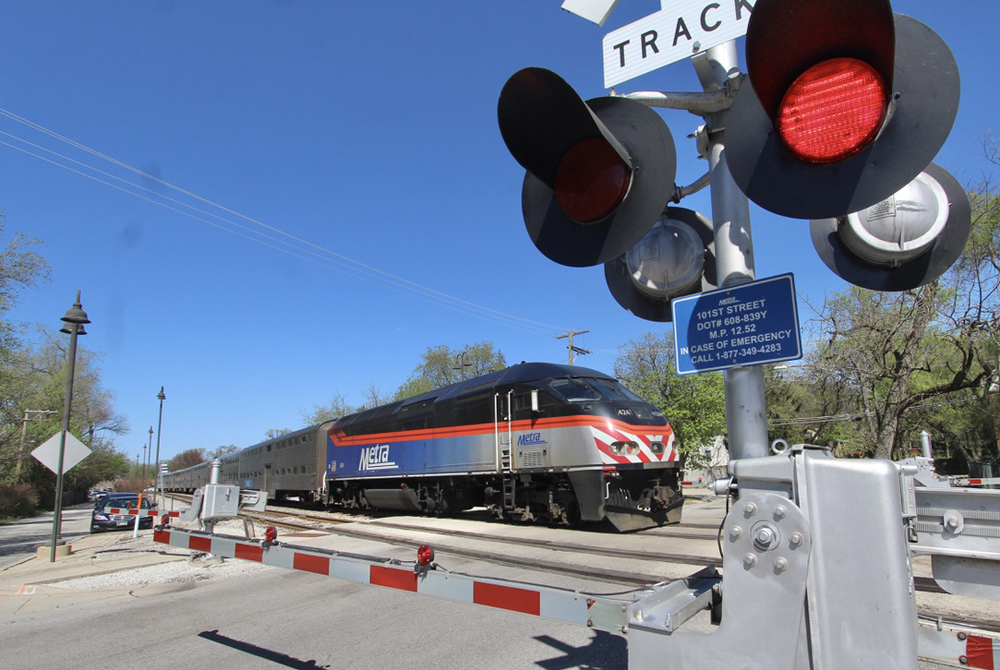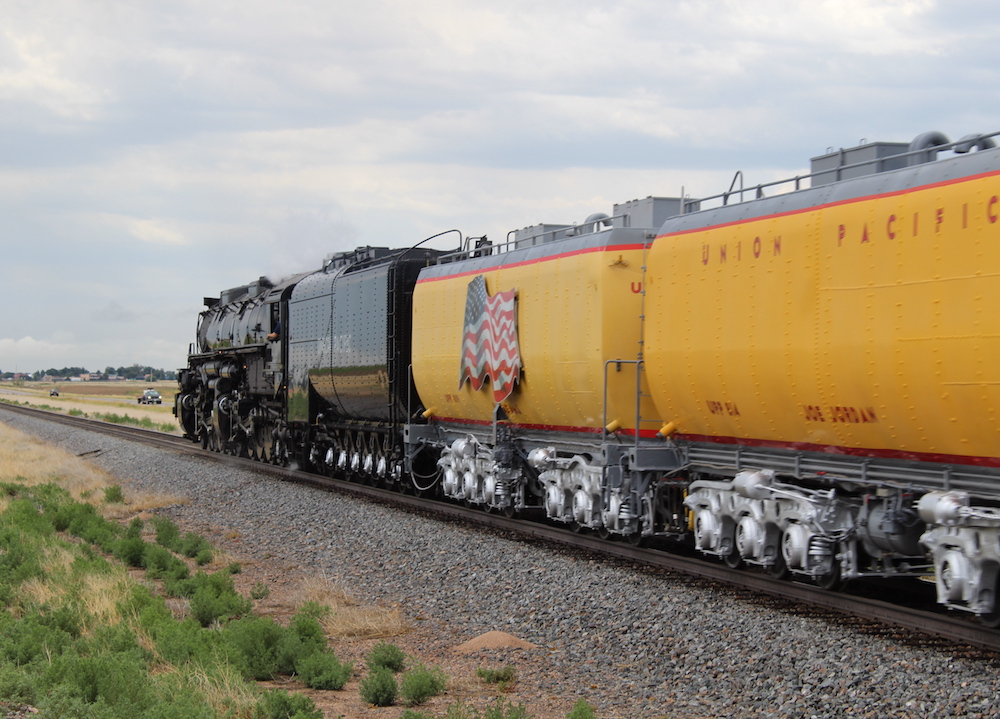Helper, Pusher, or Assistant-Locomotive Grade: A grade on which additional locomotives were stationed solely to assist a train. At the top of the grade, the additional locomotive usually cut off and returned light (without train) to the bottom, to await the next train that needed assistance.
Compensated Grade: Because curves add rolling resistance to a train (as opposed to tangent track), mountain grades are usually compensated in curves, that is, the grade is reduced by the same amount that the curve adds resistance. Tighter curves add more resistance, and thus the grade is reduced by an appropriate amount. Thus, the train encounters constant resistance of grade and curvature throughout the climb. The advantage of this is to optimize the climb: if the maximum grade was dictated by the curve, and the tangent track held to the same true gradient, then the mountain climb would be lengthened and the cost of construction would probably be increased significantly. Because curve resistance is empirically derived and not fully understood, most railroads have a different idea of the amount of compensation that is appropriate. Generally, compensation is in the range of a 0.2% to 0.3% reduction in a tight curve. Inexpensively constructed and temporary railroads often dispense with compensation; it’s mostly a feature of main lines and well-constructed railroads.
Maximum grade: The grade that is the effective maximum for a route. A short section may be significantly steeper, but since it is too short to affect train operation it is disregarded.
Profile: The vertical elevation of a railroad over distance, or, the engineering document on which these elevations are plotted (also in some instances called a track chart).
Percentage of grade: In U.S. practice, the feet a track climbs in each 100 feet of run, expressed as a percentage: thus, a 1.0% grade climbs 1 foot in every 100 feet. Some railroads use feet-per-mile. The equivalent to a 1.0% grade is thus 52 feet per mile.
Steep grade: In North American practice, grades are often considered as follows. These are by no means hard-and-fast categories, nor anything that is documented. They are merely a comparison of main-line grades.
0.1% to 0.4%: mild; the grade obtained on a highly engineered super-railroad
0.4% to 1.0%: average; used on super-railroads in difficult terrain
1.0% to 1.5%: steep; used by a super-railroad in very difficult terrain
1.5% to 2.2%: heavy; common for a railroad engineered to moderate standards
2.2% to 3.3%: very heavy; unusual and used only in very difficult terrain
3.3% plus: exceptionally steep; almost never encountered on main lines.
Pass: A low point or saddle in a defining, separating range, used for a route of transportation.
Tight curvature: This depends upon the railroad and its standards, and varies with the difficulty of terrain. Commonly, anything 8 degrees or more is considered tight, 10-12 degrees is exceptionally tight, and 14-16 degrees is extremely unusual on a main-line railroad. Broad-curve standards usually means 2 degrees or better.













